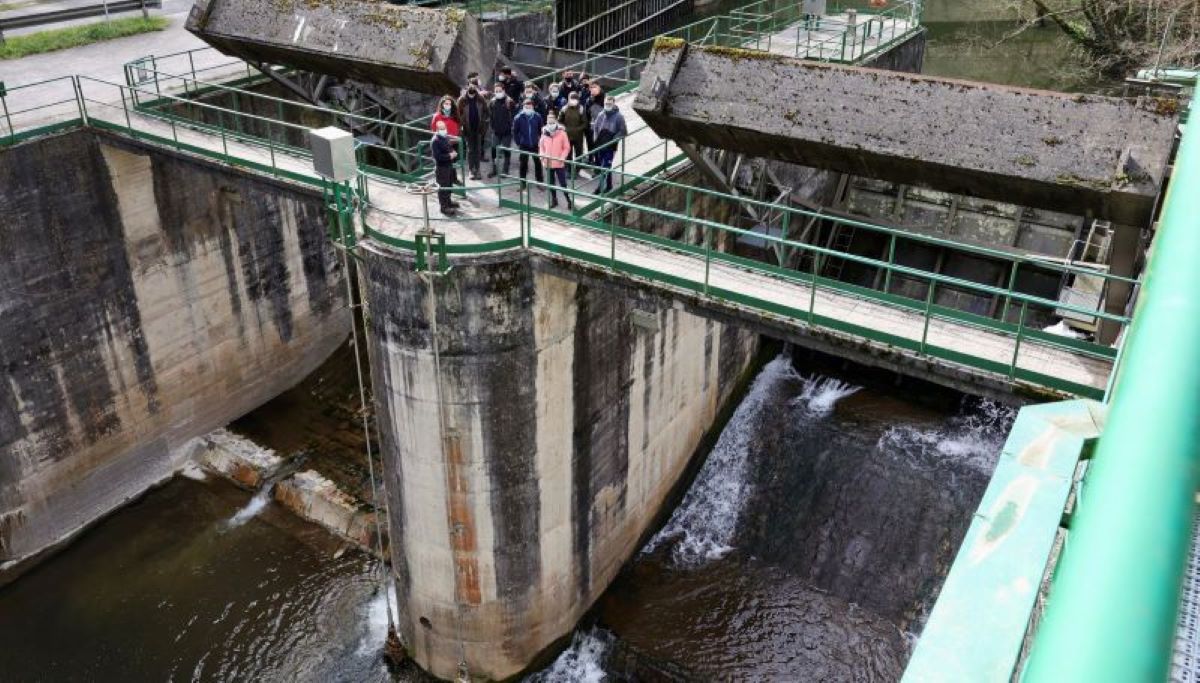
Students of the Polytechnic of Mieres visit the hydraulic power plant of Proaza

They were also interested in the operation of the Olid weir fish elevator, in the Teverga river.
Putting into practice the knowledge acquired in class and recognizing the installations and infrastructures that they will find when they enter the job market: this has been the goal of the visit of the hydraulic power plant of Proaza, propriety of EDP, for the 12 students from the degree in Forest and Natural Environment Engineering, from the University of Oviedo.
The students have gone all over the facility joined by their teacher, José Carlos Pérez, and guided by Dimas Fernández and Iván Rego, from the team of EDP’s hydraulic centers.
This guided visit of the hydraulic center of Proaza, has had a transversal nature for the training of the students. It gives them the opportunity to have a direct immersion in their professional future and allows them to speak with professionals of the center and put into practice the different subjects learned, like the hydraulic, the electrical engineering, or the electrification.
This knowledge is addressed in the subjects of the degree they take at the Polytechnic of Mieres, as the one that frames this visit, Management of Wildlife and Hunting and Fish Resources.
The attention to the architectonic dimension of the plant has also caught the students’ attention. Inaugurated in 1968, it is an example of the Spanish industrial patrimony of the 20th century. The students have checked how the architect, Joaquín Vaquero Palacios, achieved to adapt the plant of Proaza to the environment, establishing a unique dialogue with the landscape.
After the tour around the plant, they visited the fish elevator, unique in Asturias and located in the Teverga river, the lower part of the so-called Olid weir. It was inaugurated in June 2010 and its functioning, automatic every two hours, allows the fish to swim upstream.
For the students this means knowing first-hand the operation of this infrastructure. In words of their teacher, José Carlos Pérez Girón, “this elevator is an innovative solution to the traditional fish ladders, as it enables to save their movements during the reproductive cycles, in this case, the one from the salmon of the Teverga river, fulfilling thus a vital function for its conservation”.
The hydraulic plant of Proaza, its surrounding and the fish elevator from the Teverga river, are a topic of study for the undergraduates in the degree of Forest and Natural Environment Engineering. The students, that promote these trips, show an obvious sensibility to preserving biodiversity and highlighting the value of water resources in the Asturian area.

